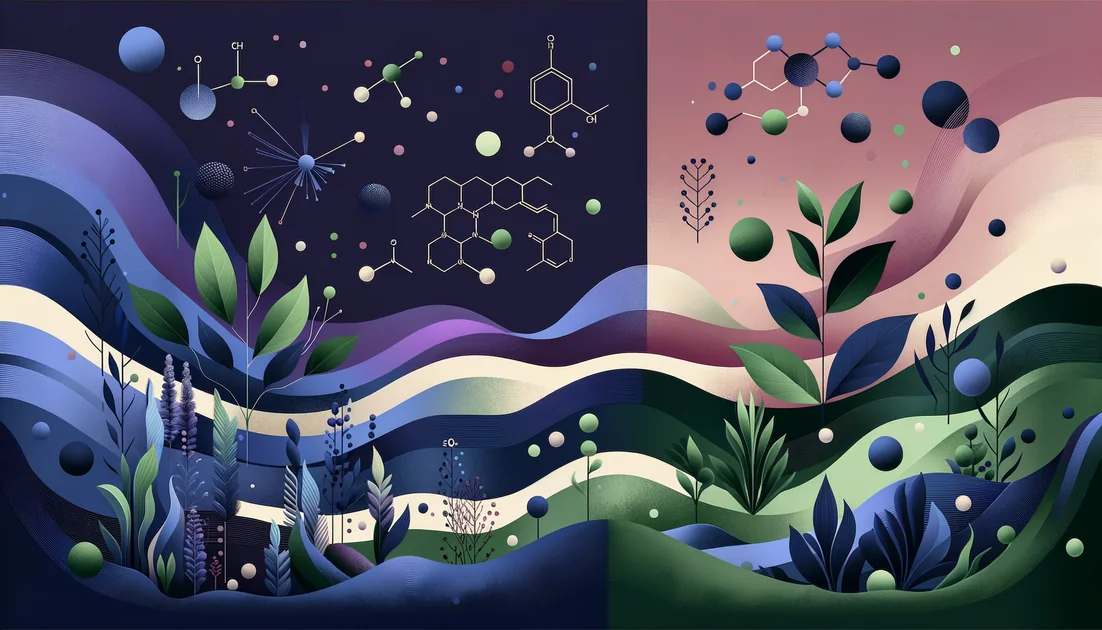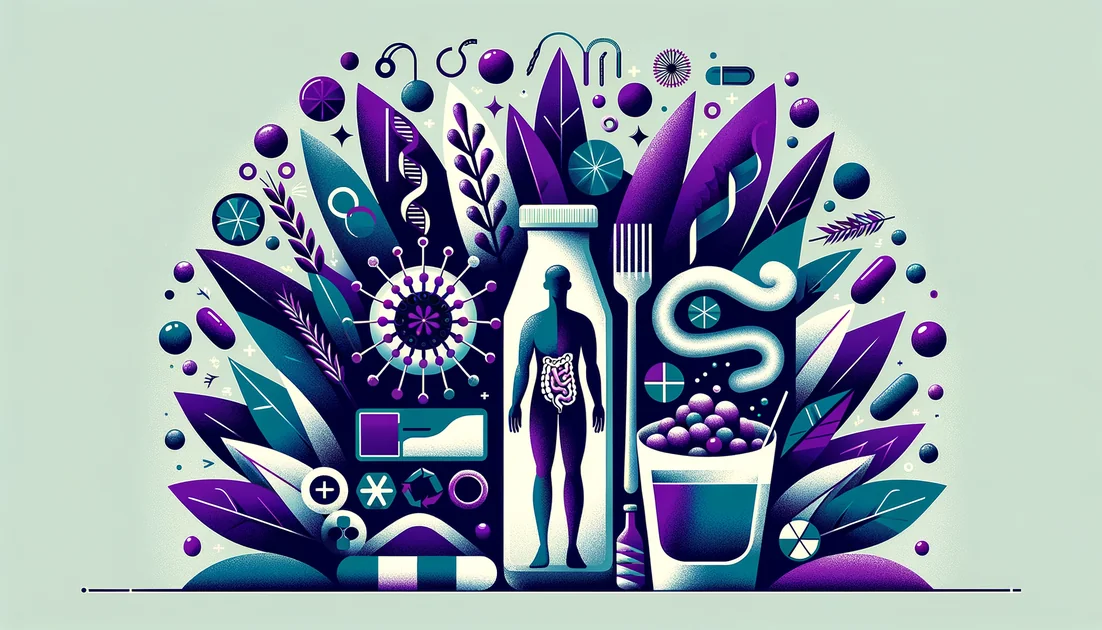
Stone, Fire, and a Food That Fortified a Continent: The Real Story of Calcium
In 1808, a young Humphry Davy hooked his new battery to a paste of "lime," boiled off the mercury, and—against all expectations—pulled a silvery metal from stone. He called it calcium, after calx, the old word for burnt limestone. Two centuries later, calcium still sits at the center of a different kind of experiment: what happens when a mineral that built civilizations becomes a supplement in your cabinet? [1]
- Evidence
- Robust
- Immediate Effect
- No → 6–12 months for bone density changes; within pregnancy for preeclampsia risk reduction
- Wears Off
- Gradually over months as bone remodels; kidney stone and serum calcium effects resolve after discontinuation and hydration
A metal pulled from stone—and into our bones
Davy's stunt at the Royal Institution wasn't a parlor trick; it was a pivot point. He used electricity to wrench calcium free from lime, proving the "earths" of Lavoisier were really oxides hiding undiscovered metals. The element's name—rooted in stone—foreshadowed its destiny: 99% of the calcium in your body ends up as bone and teeth, a living scaffold that makes strength look effortless while quietly running nerves, muscles, blood clotting, and the rhythm of your heart. [1][12]
The tortilla that became a calcium delivery system
Now shift scenes: a kitchen in Mesoamerica, centuries before Davy. Corn kernels simmer in water and lime (calcium hydroxide), an alchemy called nixtamalization. The process loosens husks, brightens flavor—and infuses the grain with calcium. In modern studies, tortillas made this way can carry roughly 160–230 mg of calcium per 100 g; more importantly, people can use that calcium. In a tracer study, women absorbed about half the calcium from low-phytate, nixtamalized tortillas, compared with about a third from typical maize—proof that an ancient technique functioned as mineral fortification long before we had the term. [16][13][14] The idea that culture can engineer nutrition is part of calcium's paradox. Sometimes tradition gets the dose and the delivery right. Sometimes, modern shortcuts do not.
When more isn't better
You've probably heard that calcium supplements protect bones. The landmark Women's Health Initiative (36,282 postmenopausal women) put that belief under a brighter light. Daily calcium (1,000 mg as carbonate) plus vitamin D (400 IU) nudged hip bone density up a sliver, but didn't significantly cut hip fractures—and it raised kidney stone risk (hazard ratio 1.17). Adherent women did see a hip-fracture benefit, hinting the story depends on the person, the dose, and the follow-through. [2] That nuance helped drive the U.S. Preventive Services Task Force to advise against routine low-dose vitamin D and calcium for primary fracture prevention in community-dwelling older adults, and a 2024–2025 update continues to find no preventive benefit across a range of doses. Supplements may help those with documented shortfalls; blanket prevention claims don't hold. [3][4] Cardiologists add another twist. A patient-level meta-analysis reported a modest increase in myocardial infarction with calcium supplements (without vitamin D). Dietary calcium didn't carry that signal. While the field remains mixed, the "bolus" delivery from pills may spike serum calcium transiently in a way food does not. [5]
"More is not necessarily better.. You can overdo it," says cardiologist Erin Michos, who urges clinicians to discuss potential cardiovascular risks of calcium pills and to prioritize diet first. [11]
Food first, with eyes open
"Ultimately, I think that the best way to get nutrients is through our food," adds preventive cardiologist Martha Gulati. She's vegan herself and points to dependable options: dairy or fortified plant milks, tofu set with calcium salts, leafy greens like bok choy and collards, almonds, beans, sardines, and canned salmon. [10] Why food first? Bioavailability and co-passengers. Your gut absorbs roughly 30% of calcium from dairy or fortified foods, far less from spinach because oxalates lock it up. Vitamin D acts like a backstage pass, opening the intestinal door; without it, much of calcium's potential goes unused. [12] Pragmatics matter: carbonate is cheapest but needs stomach acid—take it with meals. Citrate doesn't, and suits people on acid-suppressing meds. Either way, your cells can only usher in so much at once; split doses of 200–500 mg beat a 1,000 mg slug. Give levothyroxine and some antibiotics space—hours apart—so they're not grabbed by calcium on the way through. And stay under the tolerable upper limit (2,500 mg/day for most adults under 51; 2,000 mg/day at 51+). [18] Kidneys care about delivery, too. Here's a counterintuitive piece: higher dietary calcium is linked to lower kidney-stone risk, partly because it ties up oxalate in the gut. But pills—especially layered on top of adequate diets—can tilt toward stones in some people. Hydration and moderate sodium (salt pushes calcium into urine) matter as much as milligrams. [8][2]
A place calcium clearly saves lives
There is one domain where supplementation tells a brighter story: pregnancy in communities with low dietary calcium. In multiple trials and Cochrane reviews, high-dose calcium (≥1 g/day) reduced the risk of preeclampsia and related complications; lower doses show promise, too. This is calcium acting like crowd control for maternal blood pressure, shifting outcomes when food systems fall short. Policy bodies, including WHO, translate that into guidance for at-risk settings. [6][7]
The cautionary tale: milk-alkali syndrome
Too much of a good thing can dangerous. Case reports describe people developing severe hypercalcemia, kidney injury, and metabolic alkalosis after heavy use of calcium carbonate tablets—an old syndrome reborn in the supplement era. It usually reverses with fluids and stopping the calcium, but it's a stark reminder that "natural" doesn't mean "no ceiling." [9]
The pulse of a molecule
If bones are your mineral vault, calcium ions are your messengers—tiny couriers that slip past the brain's security, snap muscle fibers into action, cue clotting, and whisper instructions between cells. Your body guards that signal so fiercely that blood calcium barely budges; if intake drops, it quietly "withdraws" from the bone bank to keep the message traffic flowing. Diet, sunlight or supplement when needed, and movement all help keep that ledger in the black. [12]
Looking ahead
Two puzzles animate the next chapter. First, refinement: who truly benefits from pills, at what dose, and with what co-nutrients—vitamin D, protein, vitamin K—without inviting kidney or cardiovascular harms? Second, food systems: can we learn from nixtamalization and scale culturally smart fortification that improves use, not just content? Even milk's place is being reconsidered; a large Swedish cohort linked very high milk intake with higher mortality and fractures in women, while fermented dairy told a gentler story—associations, not verdicts, but enough to push for better trials. [15] Calcium began as stone and became structure, signal, and story. The wisest path isn't maximal—it's matched: the right amount, in the right form, for the right person, most often on a plate.
Key takeaways
- •Calcium is literally 'stone in the body': 99% resides in bones/teeth while also supporting nerves, muscles, clotting, and heart rhythm.
- •Culture solved deficiency with nixtamalization—lime-treated corn that lifted dietary calcium long before supplements existed.
- •Evidence is mixed: major trials show modest BMD gains without clear fracture reduction and a kidney-stone signal; dietary calcium isn't implicated the same way.
- •Dosage strategy: target 1,000–1,200 mg/day from food; if supplementing, use 200–500 mg per dose and split rather than a single large tablet.
- •Form and timing matter: take carbonate with meals (needs acid); citrate works with or without food and suits people on acid-suppressing therapy.
- •Cautions and fit: stay under the UL (2,500 mg for 19–50; 2,000 mg for 51+), separate from levothyroxine and some antibiotics, and consider specific groups who benefit.
You might also like
Explore more of our evidence-led investigations, comparisons, and guides across every article style.

Carlson (J.R. Carlson Laboratories, Inc.)
Carlson: Sea-to-Store Omega-3 Specialist—Elite Third-Party Testing, Solid Value, and a Transparency Gap

Current (Actual) Body Weight method vs Goal/Ideal/Adjusted Body Weight method
For most healthy, non-obese and athletic readers, calculate protein from current body weight. If you have overweight/obesity or are dosing clinically, use goal/ideal/adjusted body weight to avoid overestimating needs. [1][2][6]

Best for longevity
Selenium 200 mcg + CoQ10 200 mg daily (4 yrs) — mortality signal [2]


Alpha GPC + Uridine: Can This Duo Build Better Synapses?
The duo is a plausible dual-pathway stack (choline + uridine) with animal and mechanistic support; direct Alpha GPC + UMP human data are lacking, so synergy is theoretical, not proven.

Tocotrienols
The stealthier cousins of vitamin E—built with springy tails that move differently in cell membranes and behave differently in your body.


